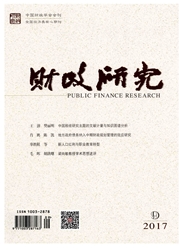

 中文摘要:
中文摘要:
美国的联邦税法渊源按其制定主体,分为立法、行政与司法三类:立法渊源包括宪法、国内收入法典和税收协定,其中经由法案提出而不断纂修的法典具有规范的立法程序、严谨的分层体系和预留的扩展空间;行政渊源包括财政部规章、国内收入署税收规则与税收规程以及其他各种行政公告;司法渊源包括美国税务法院、地区法院、联邦索偿法院、上诉法院和最高法院在一般司法程序与上诉程序中形成的判例。中美法律渊源比较应注意不同情境,特别是中国与美国分属大陆与英美法系。尽管两国有着国情、政体、所属法系等的区别,但解析美国法律体系中的税权划分及其载体,仍可为中国税法的立、改、废流程提供参考,亦对中国税收立法、执法与司法实践的协调完善具有启示意义。
 英文摘要:
英文摘要:
The sources of federal tax law in U.S.A. sorted by decision-makers can be divided into three categories which are statutory sources, administrative sources and judicial sources. Statutory sources include the Constitution, the Internal Revenue Code and Tax Treaties. Within which the IRC rectified by the Bills has normative legislative procedures, strict hierarchical system and reserved expansible space. Administrative sources include Treasury Department Regulations, IRS Tax Rulings Tax Procedures and other Administrative Pronouncements. Judicial sources include Court Decisions of both the Judicial Process in General and the Appellate Process among the U.S. Tax Court, District Court, Court of Federal Claims, Court of Appeals, and Supreme Court. There are many differences on law sources between China and U.S.A. if they are compared, especially on the perspectives of national conditions, regimes and genealogy of laws(civil law or common law system). Nevertheless, the analysis of U.S. tax power and its carriers can provide reference for the process of tax law's establishment, reform and repeal, and also can help the harmonization and perfection of tax legislation, enforcement and juridical practice in China.
 同期刊论文项目
同期刊论文项目
 同项目期刊论文
同项目期刊论文
 期刊信息
期刊信息
